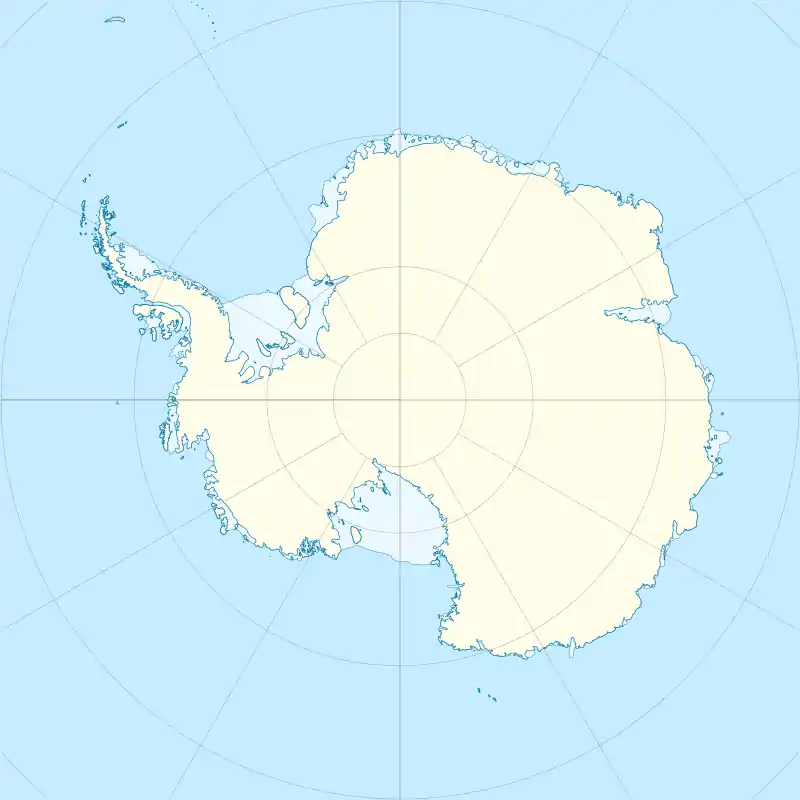Cape Brown
Cape Brown is a prominent ice-covered cape 5.5 nautical miles (10 km) north-northeast of the summit of Mount Nicholas (Mount Nicholas being the northern extremity of the Douglas Range), marking the eastern side of the entrance to Schokalsky Bay on the northeast coast of Alexander Island in Antarctica. It was first seen from a distance by the French Antarctic Expedition under Jean-Baptiste Charcot in 1909, but charted as part of a small island. It was photographed from the air in 1937 by the British Graham Land Expedition under John Rymill, and later roughly mapped from the photos. It was surveyed from the ground in 1948 by Colin C. Brown, Falkland Islands Dependencies Survey surveyor at Stonington Island, 1948–49, for whom the cape is named.[1]
Cape Brown | |
|---|---|
 Cape Brown | |
| Coordinates: 69°16′S 69°45′W | |
| Location | Alexander Island |
| Offshore water bodies | Bellingshausen Sea |
| Area | |
| • Total | Antarctica |
See also
Further reading
- Defense Mapping Agency 1992, Sailing Directions (planning Guide) and (enroute) for Antarctica, P 377
- Ute Christina Herzfeld, Atlas of Antarctica: Topographic Maps from Geostatistical Analysis of Satellite Radar Altimeter Data, P 170
External links
- Cape Brown on USGS website
- Cape Brown on AADC website
- Cape Brown on SCAR website
References
- "Brown, Cape". Geographic Names Information System. United States Geological Survey, United States Department of the Interior. Retrieved 20 September 2011.
![]() This article incorporates public domain material from "Brown, Cape". Geographic Names Information System. United States Geological Survey.
This article incorporates public domain material from "Brown, Cape". Geographic Names Information System. United States Geological Survey.